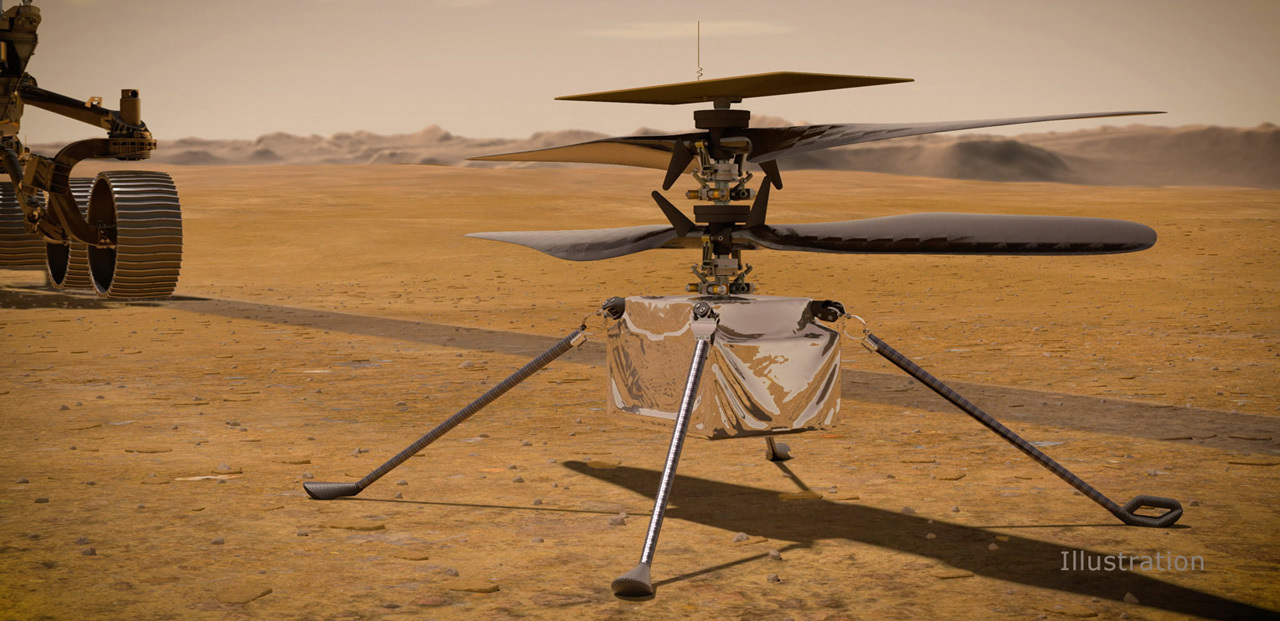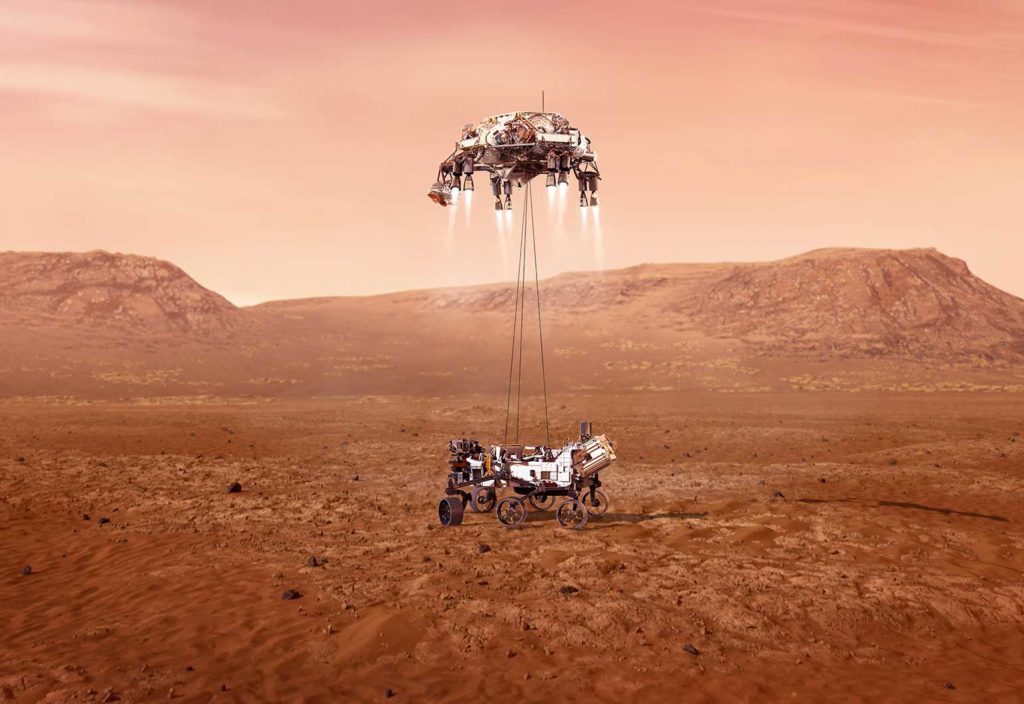The delivery of the Mars rover Perseverance, safe and sound onto a Martian lake, is arguably the ultimate example of the power, vision and future potential of engineering.
Every so often an event occurs that is so far-reaching in its scope that it defies definition. It crosses sectors and industries, brings together countless disciplines in creative and truly ground-breaking ways and introduces entirely new and previously unimagined possibilities. In doing so, it captures the imagination of all humanity.
One such event occurred on Friday last week, February 19, a date that will be remembered as historic. It was a feat of such astounding science, engineering and audacity that it’s difficult to even describe.
Instead, we’ll borrow from a piece written by Dr Angus Hervey and Amy Rose of Future Crunch.
“At around 8am this morning, Australian time, a van-sized robot weighing just over 1000 kg hit the upper atmosphere of Mars at more than 20,000 km/h, decelerated, deployed a huge parachute while still travelling at supersonic speeds, ditched its heat shield, and then winched itself down on a cable from a rocket-powered jetpack to the dusty surface of the Red Planet.
“It’s sitting there right now, in an old Martian lake, 200 million kilometres from where you’re sitting, a $2.7 billion rover equipped with a plutonium-powered battery and seven of the most advanced scientific instruments ever invented. Attached to its belly is a little helicopter named Ingenuity, which will soon attempt to become the first rotorcraft ever to fly in the skies of a world beyond Earth.”

One of those pieces of machinery is a new system carrying out tests around the production of oxygen from the Martian atmosphere.
Another is hunting for chemical and molecular evidence of microbes, or evidence of past life, on the red planet.
Then there’s the machine that drills samples of the Martian surface, conducts an analysis of that sample, then neatly packages it up and leaves it on the planet’s surface, to be collected by another rover launching in 2026 and landing in 2028.
That rover will pick up the samples, place them inside a rocket and blast them into the Martian orbit, where they will be captured by an autonomous spacecraft and transported back to Earth.
“From my perspective, what tells a really strong story is that as incredible as Perseverance is, it’s actually part of a much bigger mission,” said Engineers Australia member Dr Sarah Cannard FIEAust, engineer, physicist and project manager at Nova Systems.
“It sends a message to engineers and scientists across the world that going to Mars, and having a sustained presence on the Moon, is not just talk any more.”
The fact that samples are being placed for follow-up missions to pick up, the mechanical engineer says, is a powerful demonstration that we’re witnessing the rolling out of a sustained program.
“They don’t know how it’s going to end and don’t have the technology to do some of the things they’re planning, but they’re going ahead anyway,” Cannard, also Deputy Industry Director of SmartSat CRC, Program Director and Project Manager for Australian Remote Operations for Space and Earth (AROSE), and self-confessed ‘space geek’, told create.
“That’s the most exciting part.”
A career-defining event
This week is Dr Ed Kruzins’ final one at work before he leaves CSIRO. For the physicist, aeronautical engineer and electrical engineer, the timing is no coincidence.
Having spent nine years as Director of CSIRO NASA Operations and Canberra Deep Space Communications Complex at Tidbinbilla — one of three vital communications facilities around the globe (the other two being in Madrid and California) that carry signals from Mars rovers and other spacecraft on behalf of NASA Jet Propulsion Laboratory (JPL) — he didn’t want to miss this landing.
“I wanted to hang about a bit longer to catch this one,” Kruzins told create.
“I started as Director in 2012 and had been in the role for just four months when the Curiosity rover landed on Mars. I wanted to see this one out, having witnessed some of the build of the Perseverance spacecraft at JPL, and involved in launch support and its tracking. I was keen to see it succeed.”
Just as important, Kruzins said, is the fact that his own retirement as Director creates room for new talent to enter the Australian space sector.
“It’s such a dynamic area,” he said.
“It’s important to have new engineers and scientists coming in and taking Australian space in new directions.”
What Perseverance means for Australia
What does the Perseverance project mean for engineering in Australia? It’s got a lot to do with audacity, Kruzins said.
“It tells us we can achieve very, very difficult things,” he said.
“Australians have an audacious engineering spirit, perhaps it has something to do with our pioneering background. We have the strength and skills to go for it. At the end of the day, we’re only limited by our imagination and our tenacity.”
Cannard agreed, saying Australian scientists and engineers are perfectly placed to help lead such projects that require remote operations, extreme safety measures and innovative solutions.
“We have world-class remote operations technology in Australia across numerous sectors. That tech includes machine learning, AI and robotics,” she said.
“At AROSE, we’re pulling it all together and pivoting it to service the space industry. Then we’re taking what we learn in space and bringing it back down to benefit terrestrial applications in mining, agriculture, medicine and many other sectors.”
The most exciting part of the Perseverance project, Cannard believes, is the attempt to produce oxygen from the Martian atmosphere, using a process known as solid oxide electrolysis.
“Before we can build structures on Mars, we need to be confident that humans on the planet can breathe,” she said.
“If we only send robots, that’s not a very inspirational future.”
Until then though, robots will be central to every step. Australian engineers are uniquely placed to develop and provide such tech.
“The tyranny of distance has been a major driver of technology’s advancement in Australia,” Canard said.
“Being able to remotely operate a mining asset, worth billions, without having to set up a workforce in the middle of nowhere has been essential in terms of economics, safety and work/life balance. Australia has been forced down that route. Because of that, we’ve been doing it for decades, and now we’re really quite comfortable with it.”
